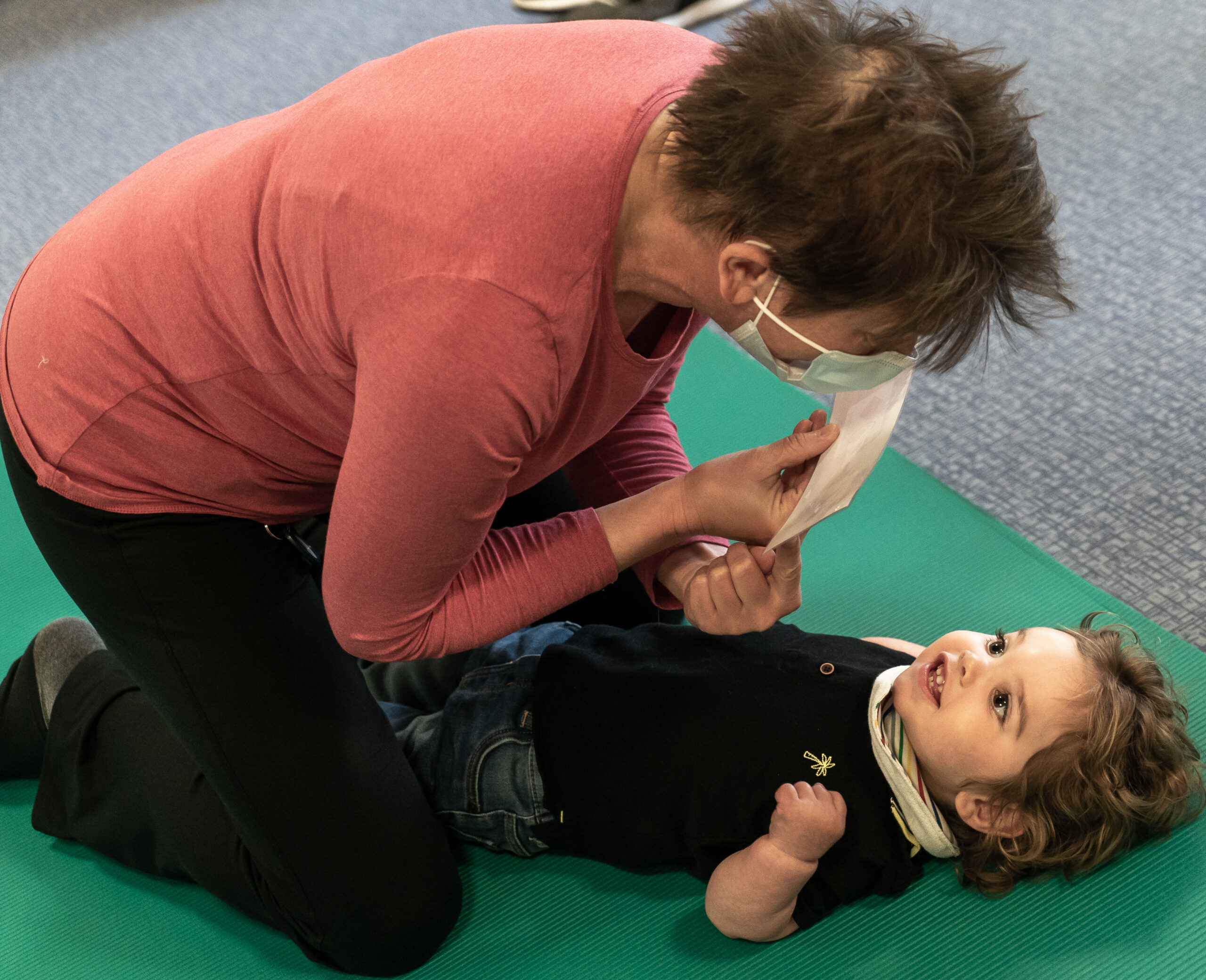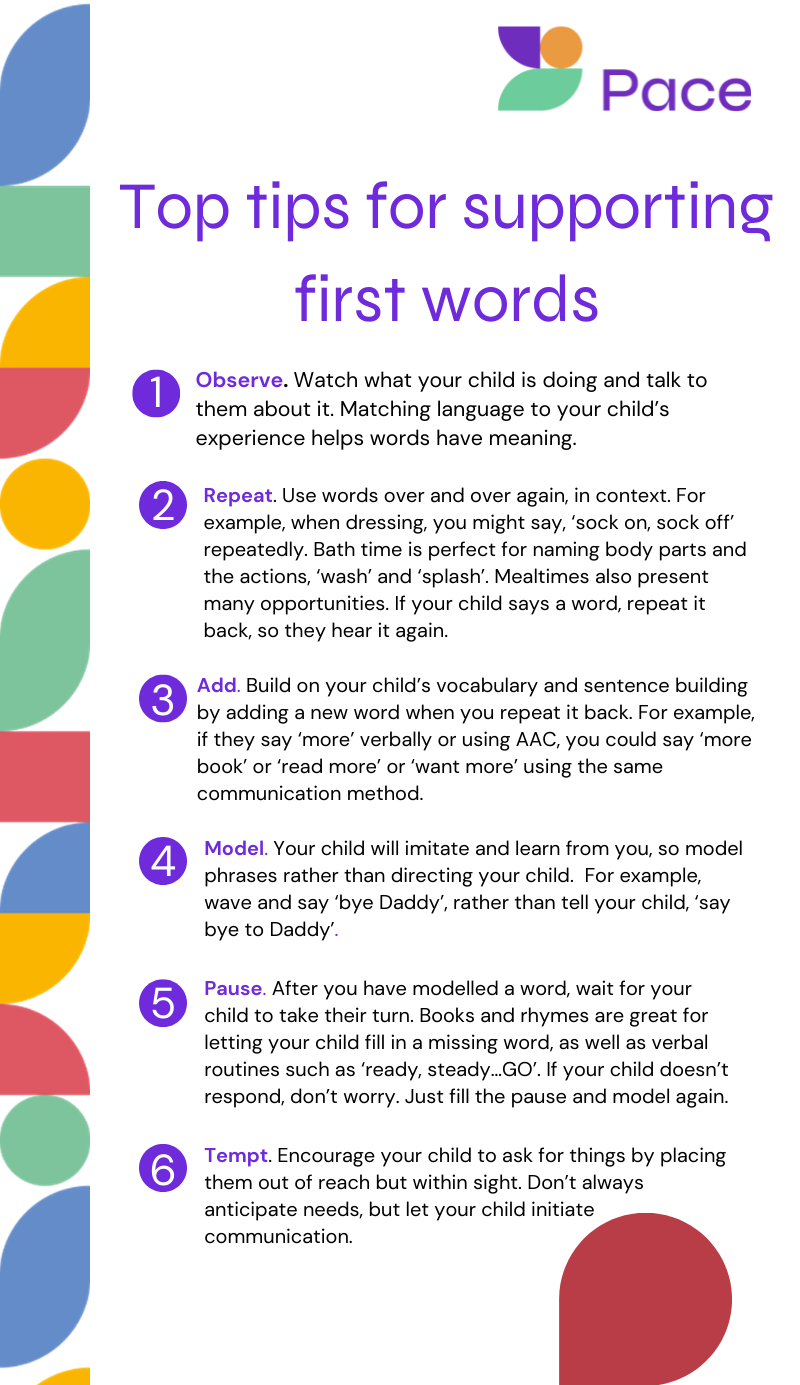First words
How to support your child to learn language and develop early communications skills.
Developing communication skills

Developing communication skills
Did you know, children hear more than 4,000 hours of speech before they reach 18 months old? It means your child could hear 4,000 words a day before uttering one themselves!
Speech is a complex activity that relies on gross motor development as well as understanding and language-learning. Augmentative and Alternative Communication (AAC) can provide support for your child.
Speech is a complex activity that relies on gross motor development as well as understanding and language-learning. Augmentative and Alternative Communication (AAC) can provide support for your child.

Observe. Watch what your child is doing and talk to them about it. Matching language to your child’s experience helps words have meaning.
Repeat. Use words over and over again, in context. For example, when dressing, you might say, ‘sock on, sock off’ repeatedly. Bath time is perfect for naming body parts and the actions, ‘wash’ and ‘splash’. Mealtimes also present many opportunities. If your child says a word, repeat it back, so they hear it again.
Add. Build on your child’s vocabulary and sentence building by adding a new word when you repeat it back. For example, if they say ‘more’ verbally or using AAC, you could say ‘more book’ or ‘read more’ or ‘want more’ using the same communication method.
Model. Your child will imitate and learn from you, so model phrases rather than directing your child. For example, wave and say ‘bye Daddy’, rather than tell your child, ‘say bye to Daddy’.
Pause. After you have modelled a word, wait for your child to take their turn. Books and rhymes are great for letting your child fill in a missing word, as well as verbal routines such as ‘ready, steady…GO’. If your child doesn’t respond, don’t worry. Just fill the pause and model again.
Tempt. Encourage your child to ask for things by placing them out of reach but within sight. Don’t always anticipate needs, but let your child initiate communication.
Repeat. Use words over and over again, in context. For example, when dressing, you might say, ‘sock on, sock off’ repeatedly. Bath time is perfect for naming body parts and the actions, ‘wash’ and ‘splash’. Mealtimes also present many opportunities. If your child says a word, repeat it back, so they hear it again.
Add. Build on your child’s vocabulary and sentence building by adding a new word when you repeat it back. For example, if they say ‘more’ verbally or using AAC, you could say ‘more book’ or ‘read more’ or ‘want more’ using the same communication method.
Model. Your child will imitate and learn from you, so model phrases rather than directing your child. For example, wave and say ‘bye Daddy’, rather than tell your child, ‘say bye to Daddy’.
Pause. After you have modelled a word, wait for your child to take their turn. Books and rhymes are great for letting your child fill in a missing word, as well as verbal routines such as ‘ready, steady…GO’. If your child doesn’t respond, don’t worry. Just fill the pause and model again.
Tempt. Encourage your child to ask for things by placing them out of reach but within sight. Don’t always anticipate needs, but let your child initiate communication.
If your child needs additional support with communication, remember that using AAC communication methods supports and promotes speech. There are opportunities throughout the day to talk to your child and support their first words. Make communication fun and meaningful, drop your own agenda and let your child lead the way.
